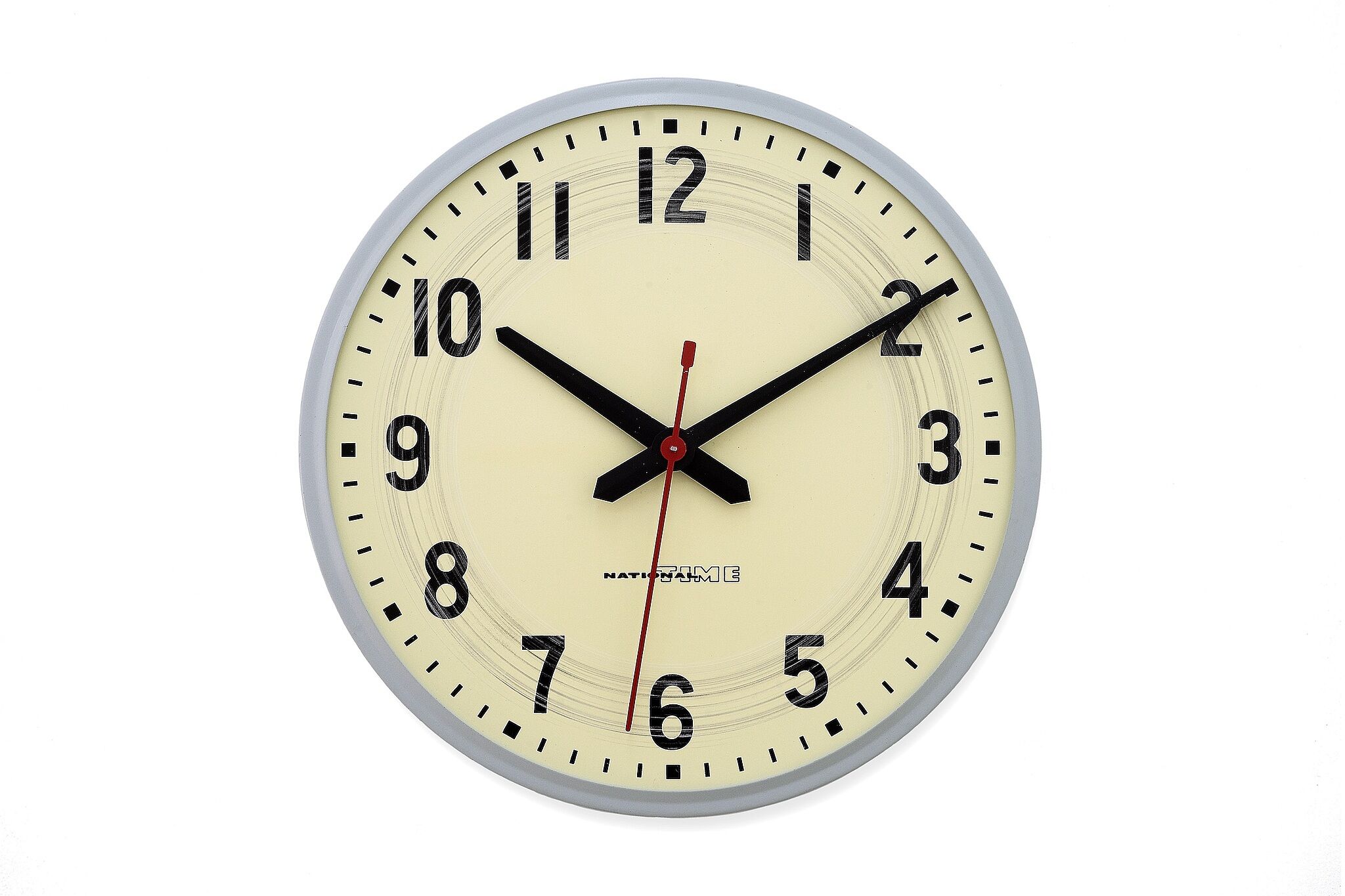Whitney Biennial 2019 | Art & Artists
May 17–Oct 27, 2019
Whitney Biennial 2019 | Art & Artists
Agustina Woodgate
75
Floor 5
Born 1981 in Buenos Aires, Argentina
Lives in Miami, FL, and Amsterdam, the Netherlands
National Times is a closed-circuit network of clocks synchronized directly by the power grid. Since the Industrial Revolution, schools, factories, hospitals, and offices have used this kind of network architecture— referred to as a “master/slave” configuration—to keep consistent time. A single digital master clock sends power signals to a series of analog slave clocks, commanding synchronized measure across an entire institution. The master keeps steady time based on a pulse transmitted directly from the local power grid, whose frequency is aligned with the atomic clock at the National Institute of Standards and Technology, which establishes official United States time.
In her work, the hands of the slave clocks have been outfitted with sandpaper. As National Times progresses, the minute hands of the slave clocks scrape away the numerals on their faces until they are completely erased. Conditioned by the current state of labor and power, the slave clocks progressively erode their functional value, collectively reclaiming autonomy in the process of disintegration.
Detail of National Times, 2016
-
0:00
Agustina Woodgate
0:00
Agustina Woodgate: My name is Agustina Woodgate. National Times is an installation composed of forty analog slave clocks, operated and synchronized by a digital master clock that has unidirectional control over the slave network.
I purchased these objects because of the way they are named. I was shocked to find out that this terminology is being used so freely in the technology industry.
This kind of clock system is the one that we typically see in prisons, in government offices, in schools, in factories. And in fact, our cell phones are digital slaves to the master clock in Washington, DC.
I had modified every single minute hand on each slave by adding a block of sandpaper right underneath. As National Times progresses, the minute hand of the slave clocks will scrape away the numerals on their faces.
The relationships these objects have with each other very much represent our contemporary power structures. This installation is a display of reality, nothing is made up. This is just how things work.

